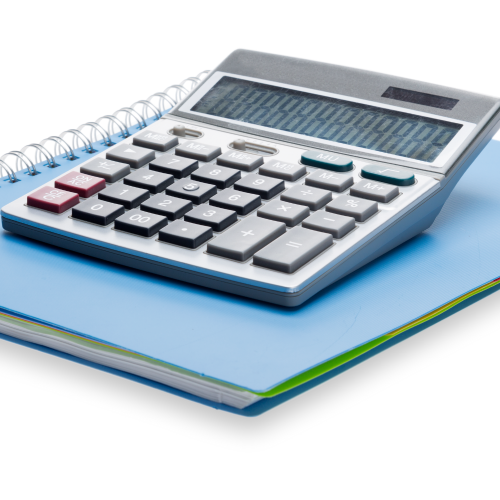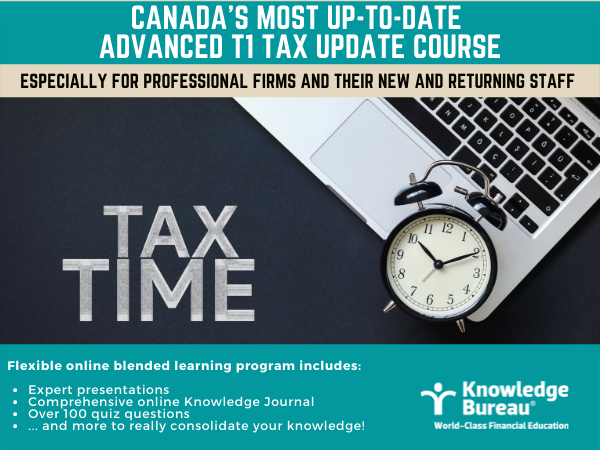Tax Tip: The Home Accessibility Tax Credit

Did you know the federal government intends to double the Home Accessibility Tax Credit for tax year 2022? This week’s tax tip is relevant to caregivers and those age 65 or older. You may even be eligible to make a claim this year. Here’s what you need to know:
Excerpted from Knowledge Bureau’s Advanced Tax Update course – now until March 15 you save $200 on this professional program, available online with 24/7 access.
Course Content:
Introduction to T1 Filing and Planning
Unique Taxfiler Profiles
Family Filing
Simple Employment Profiles
More complex Employment Profiles
Senior Profiles
Investor Profiles
The Self-Employed
Principal Residences
2021 T1 Tax Theory Changes
Home Accessibility Tax Credit, a federal non-refundable credit is available for the cost of renovations or alterations to a dwelling that allows a taxpayer who is 65 or older or who is eligible for the disability amount, to gain access to or be more mobile or functional within the dwelling.
The maximum credit is 15% of $10,000 or $1,500. This credit is expected to double in 2022 to $20,000, resulting in federal tax savings of $3,000.
Where more than one taxpayer qualifies for this credit, the credit may be split between taxpayers so long as the maximum $10,000 ($20,000 in 2022) claim is not exceeded. The requirements for the renovations are similar to those for claiming renovations for disabled individuals as a medical expense. Where the expenditure qualifies for both credits, both credits may be claimed.
The following definitions apply:
To qualify for the Home Accessibility Tax Credit, an “eligible dwelling” is defined as a housing unit owned by an individual that is ordinarily inhabited, or be reasonably expected to be ordinarily inhabited, at any time during the taxation year by:
- A “qualifying individual”
- An “eligible individual” of a qualifying individual so long as the qualifying individual does not, throughout the taxation year, own and ordinarily inhabit another housing unit in Canada
A "qualifying individual" means someone who is
- 65 or older by the end of a taxation year
- Eligible for the disability amount
Now, the definitions become a bit more complicated. An "eligible individual" may claim the Home Accessibility Tax Credit if they have claimed any of the following credits for a qualifying individual:
- The spouse or common-law partner amount (or could have had the qualifying individual had no income)
- Eligible dependant amount (or could have if the qualifying individual was not married or in a common-law relationship and the qualifying individual had no income),
- Canada caregiver amount (or could have if the qualifying individual was over 18 and had no income
- Infirm dependant amount (or could have had the qualifying individual was over 18 and had no income or was dependant by reason of infirmity)
Next, it’s important to understand what can be claimed. An eligible dwelling includes the land subjacent to the housing unit and up to 1/2 hectare of contiguous land (or more, if necessary, for the use and enjoyment of the housing unit as a residence).
A "qualifying renovation" means a renovation or alteration of an eligible dwelling of a qualifying individual or an eligible individual in respect of a qualifying individual. The renovation or alteration must be of an enduring nature, integral to the eligible dwelling and must be undertaken to:
- enable the qualifying individual to gain access to, or to be mobile or functional within, the eligible dwelling, or
- reduce the risk of harm to the qualifying individual within the eligible dwelling or in gaining access to the dwelling.
Finally, a "qualifying expenditure" is outlay or expense in the taxation year in respect of a qualifying renovation. This includes:
- the cost of goods acquired, or services received during the year,
- the cost of permits required for the qualifying renovation, and
- outlays or expenses for the rental of equipment used in the course of the qualifying renovation.
Here’s what doesn’t qualify. Expenditures to acquire
- property that can be used independently of the qualifying renovation;
- household appliances (excluding furnaces and other heating systems);
- electronic home-entertainment devices
- annual, recurring or routine repairs or maintenance;
- costs for housekeeping, security monitoring, gardening, outdoor maintenance or similar services;
- financing costs;
- expenses incurred primarily for the purpose of increasing or maintaining the value of the eligible dwelling;
- expenses incurred for the purpose of gaining or producing income from a business or property;
- goods or services provided by a person not dealing at arm's length with the individual, unless that person is registered for the GST/HST; and
- expenses that can reasonably be considered to have been reimbursed, other than government assistance amounts.
For 2021, the Worksheet for the Return is used to enter the information relevant to the claim.
